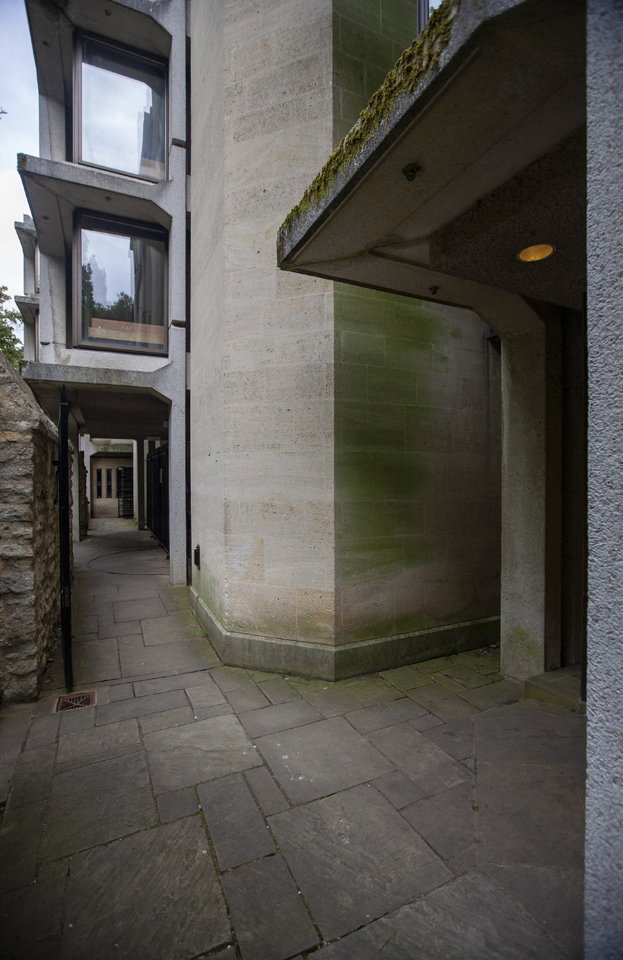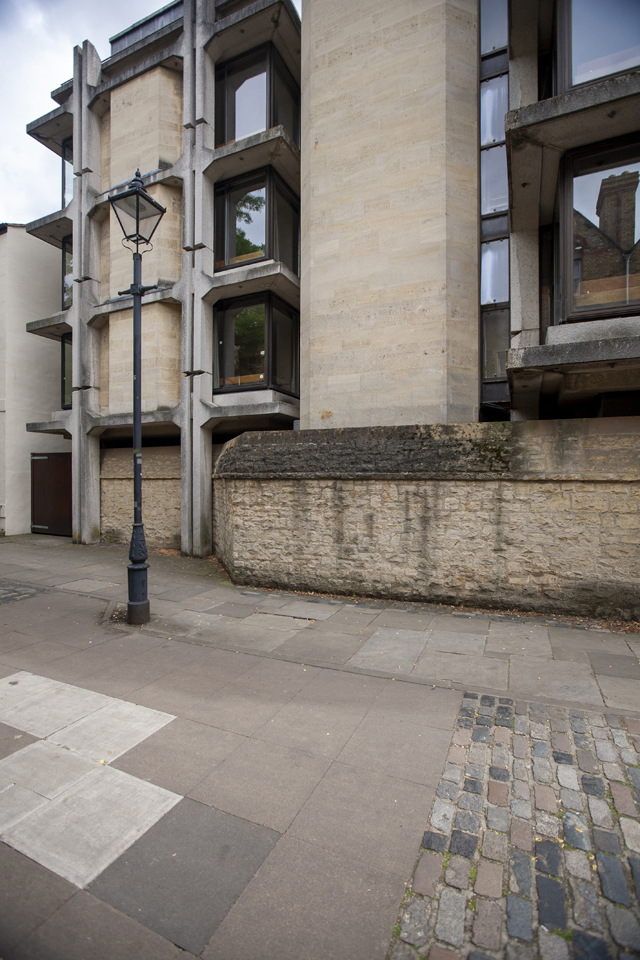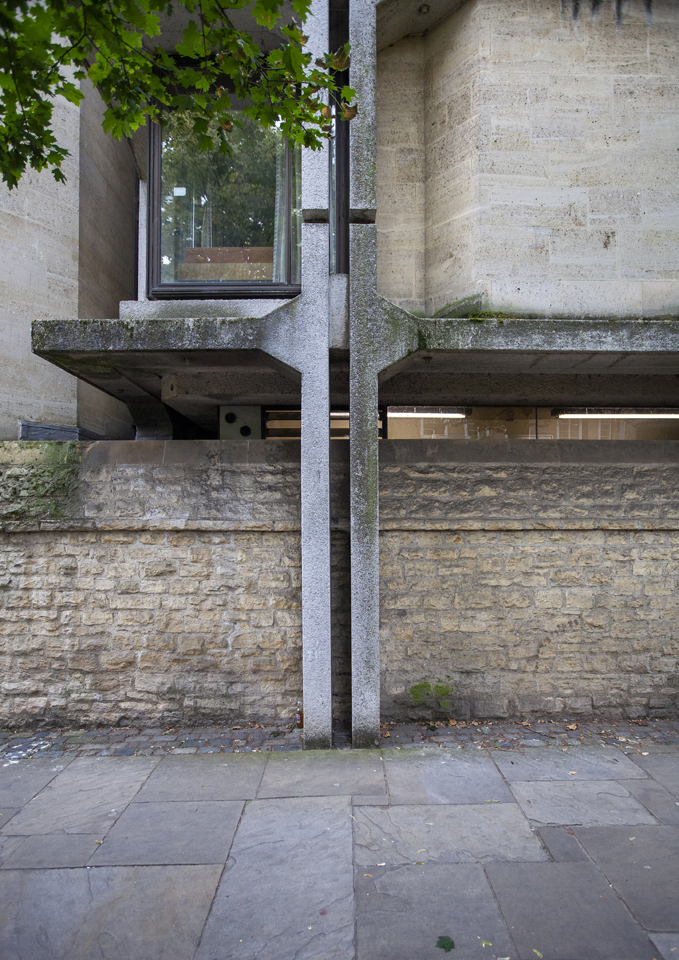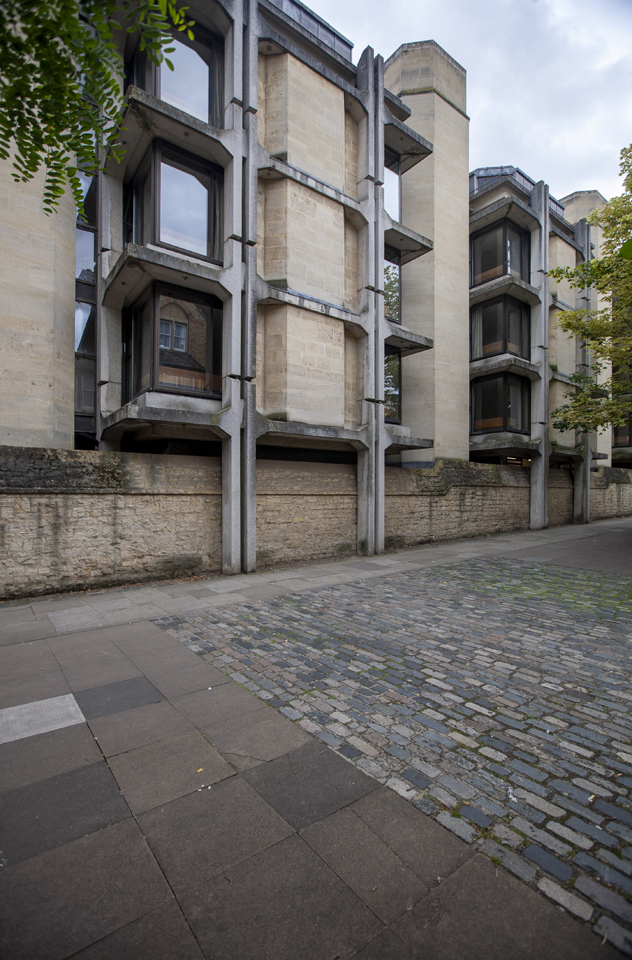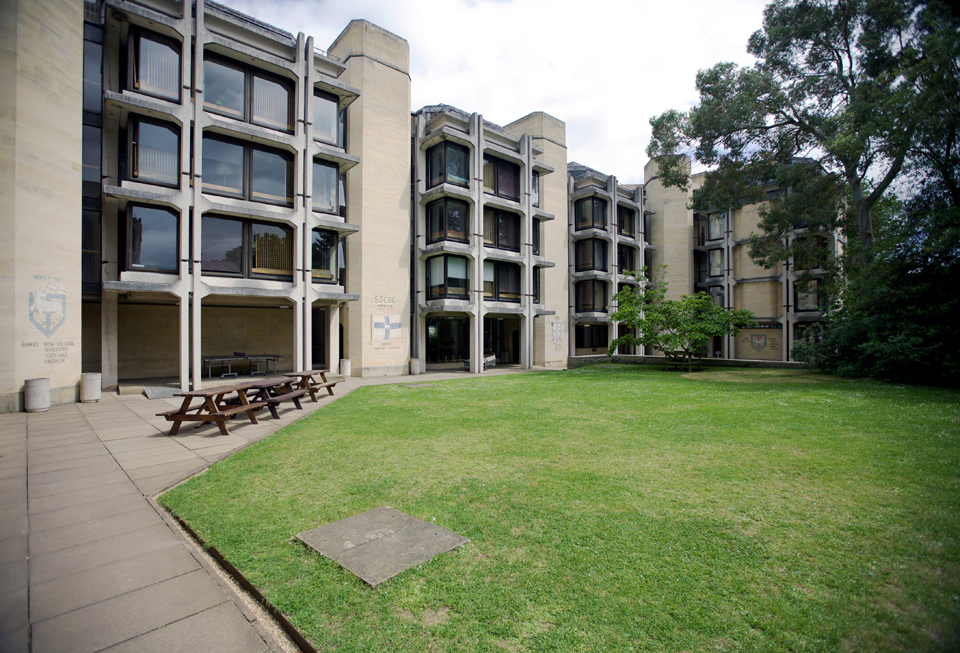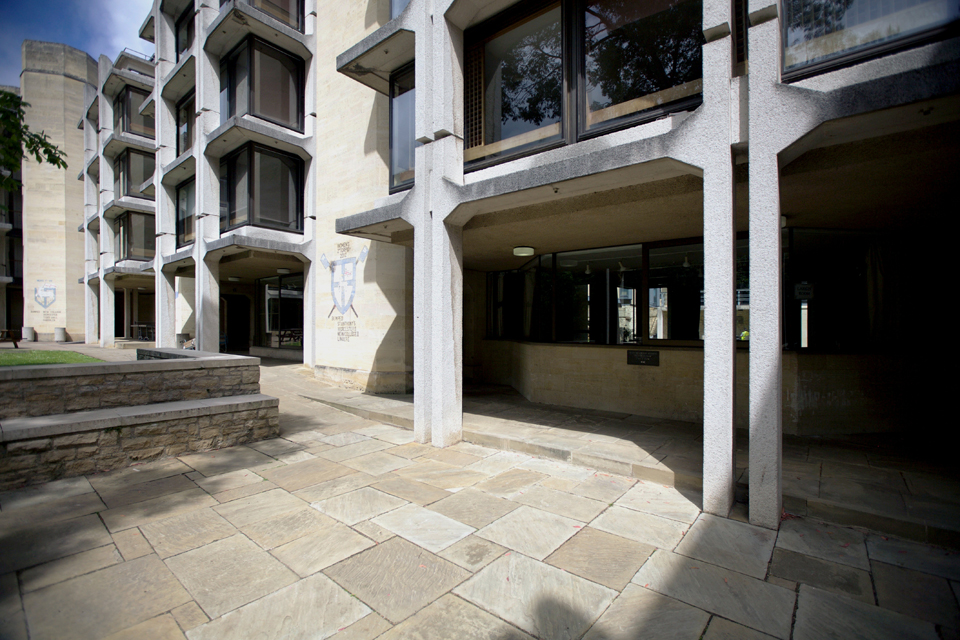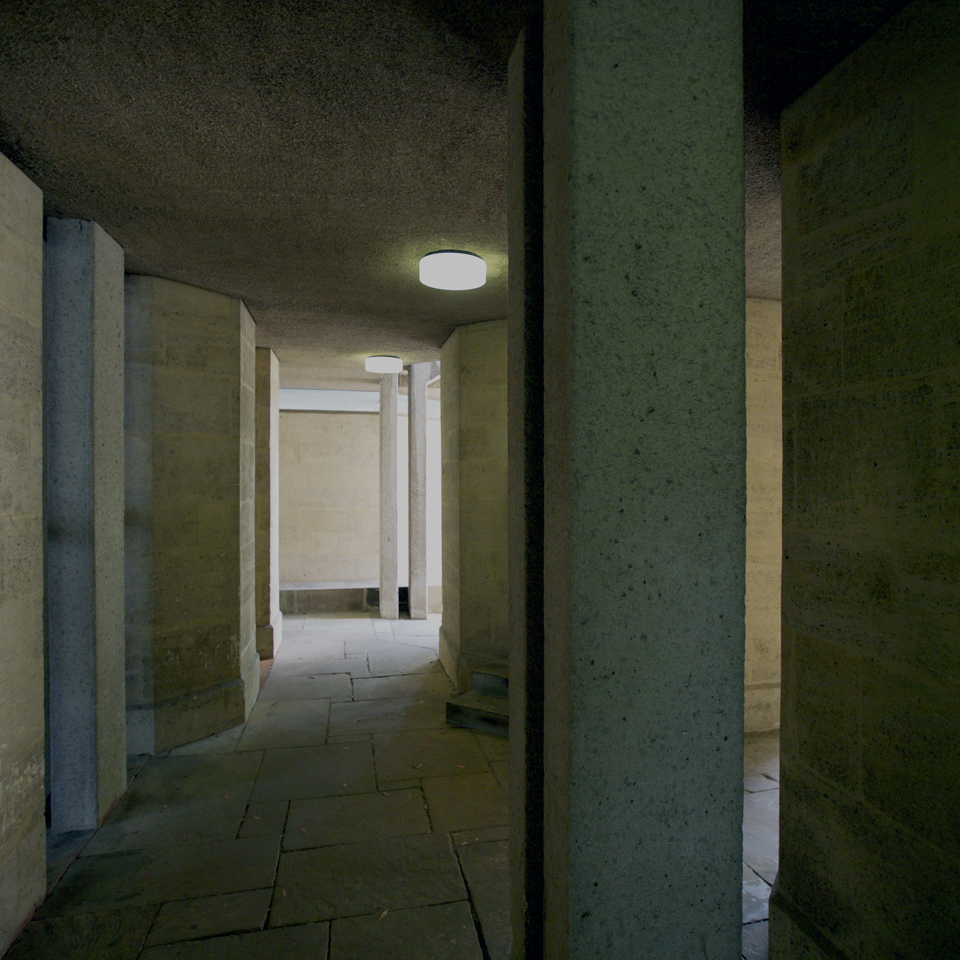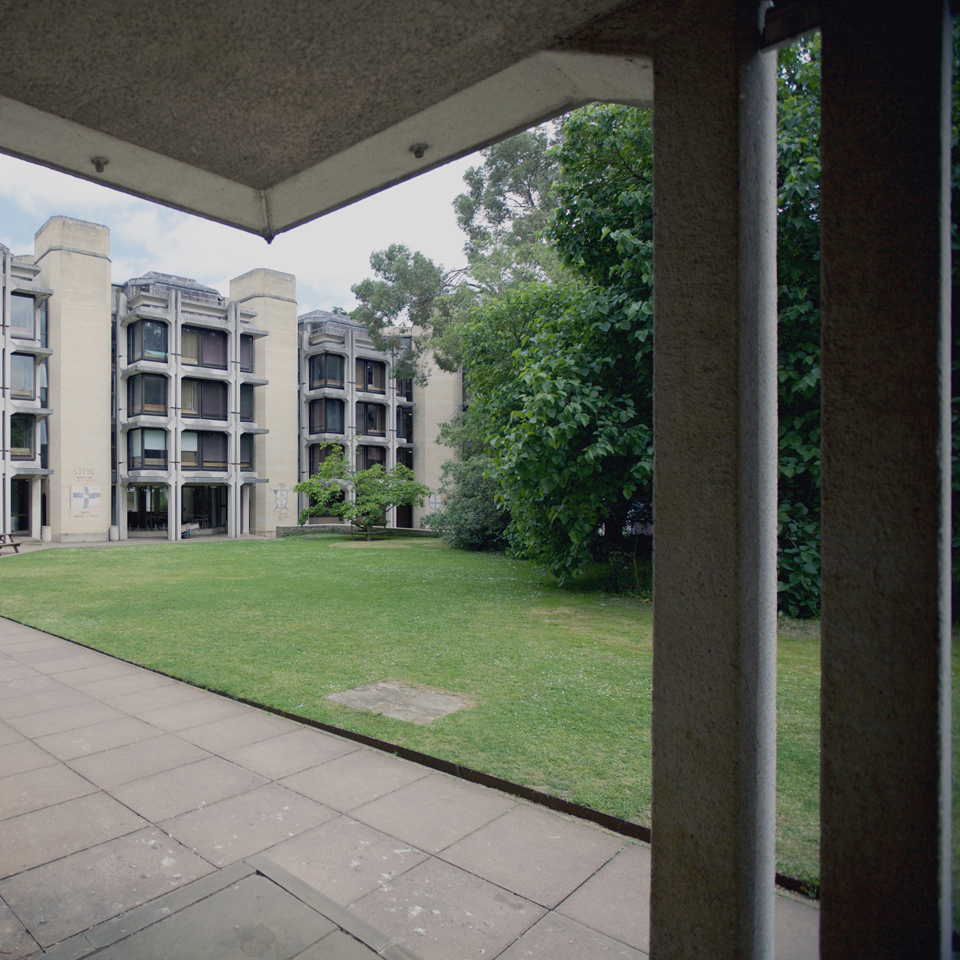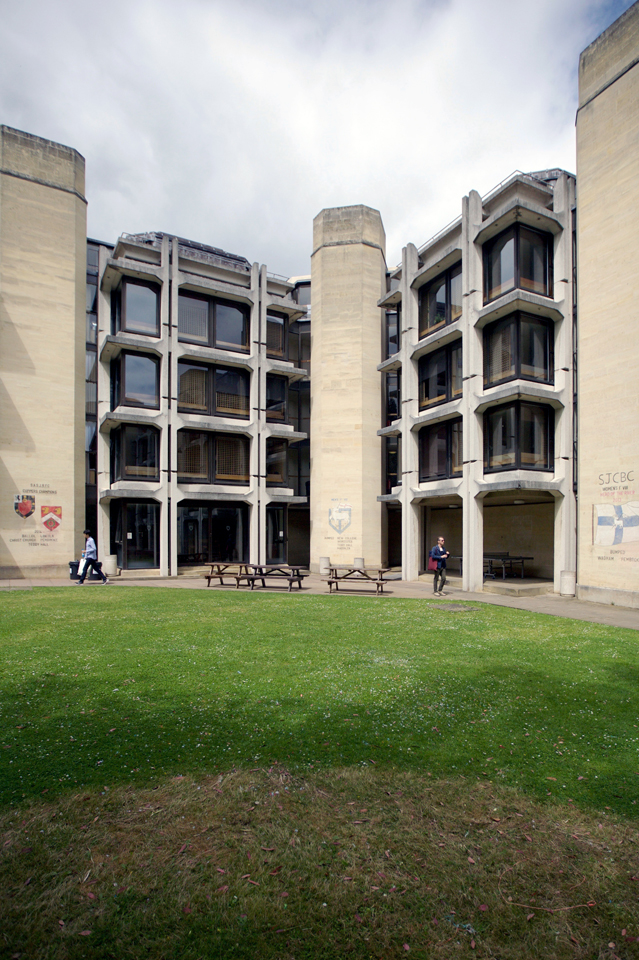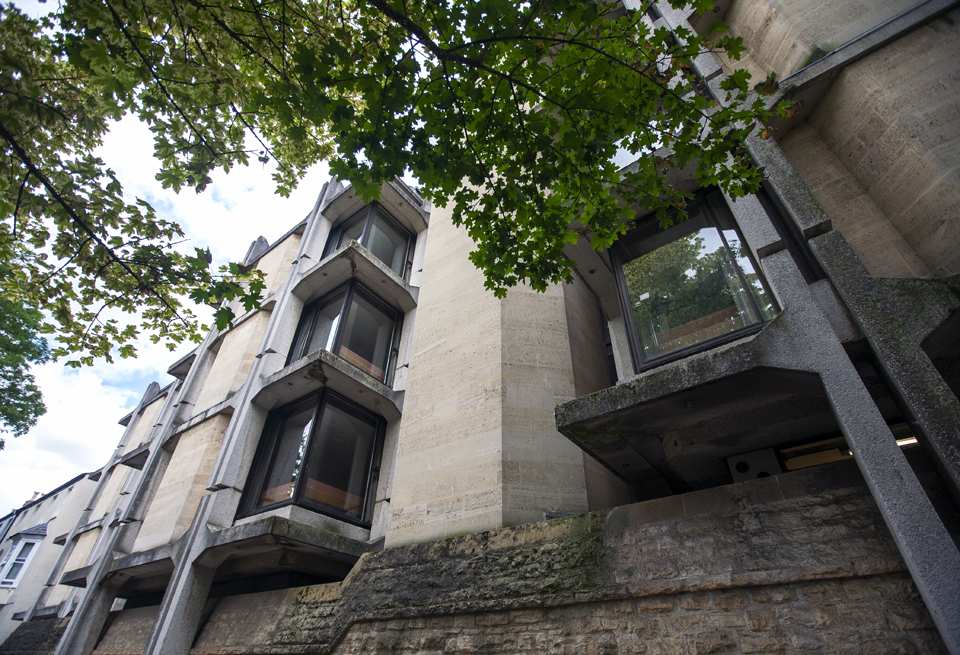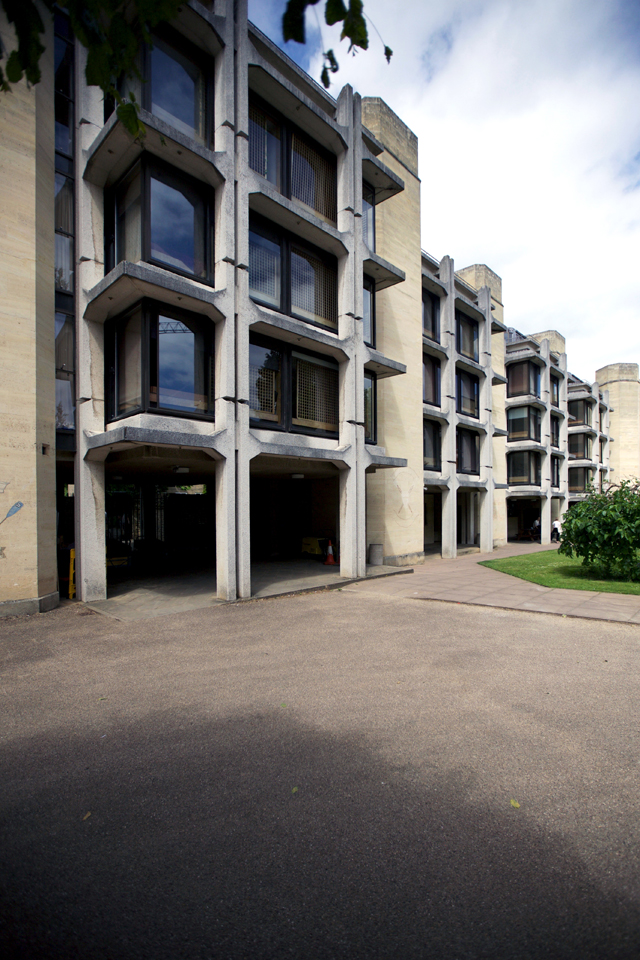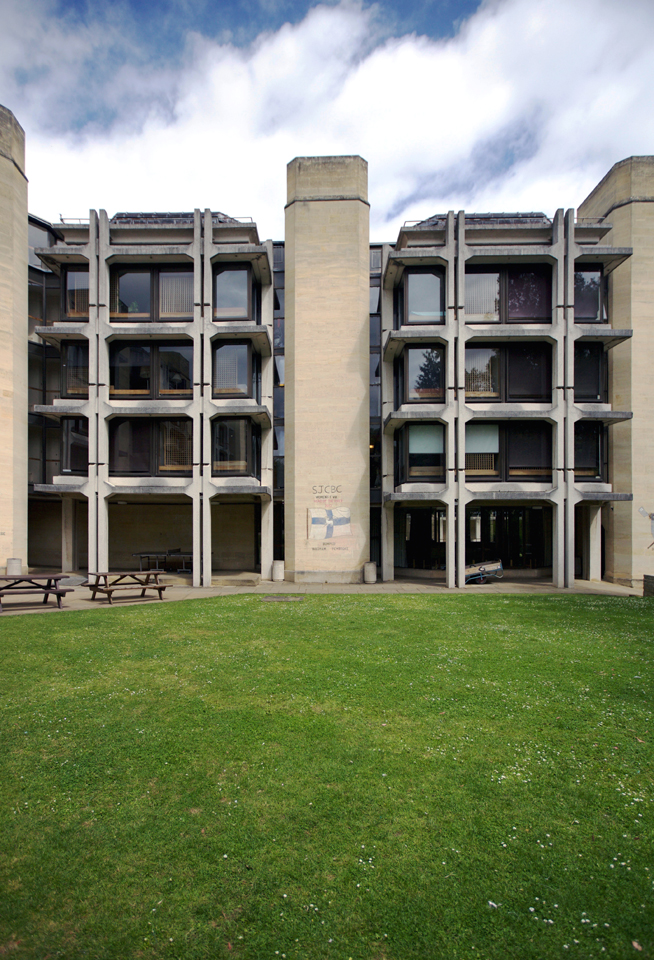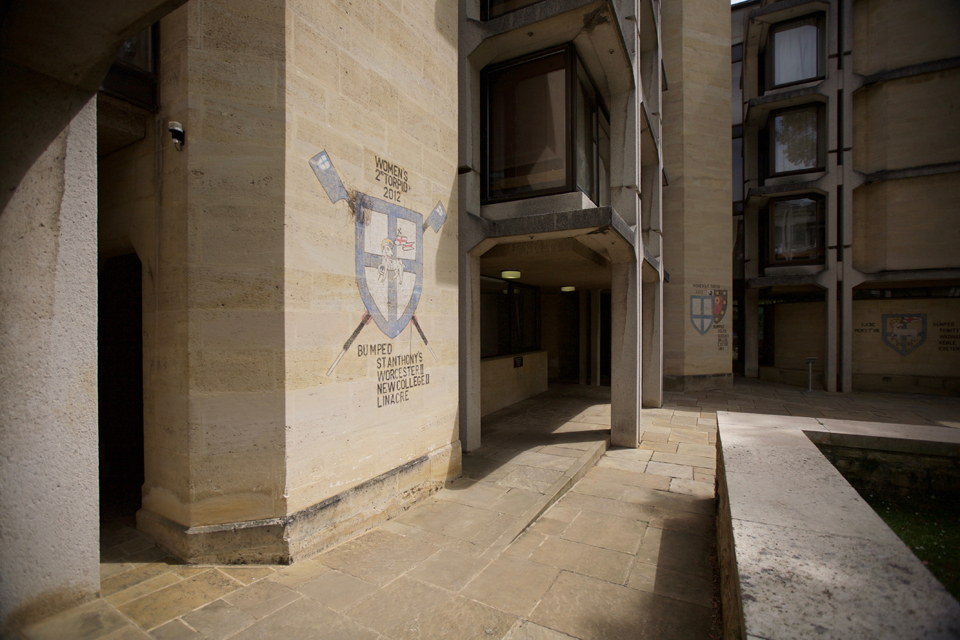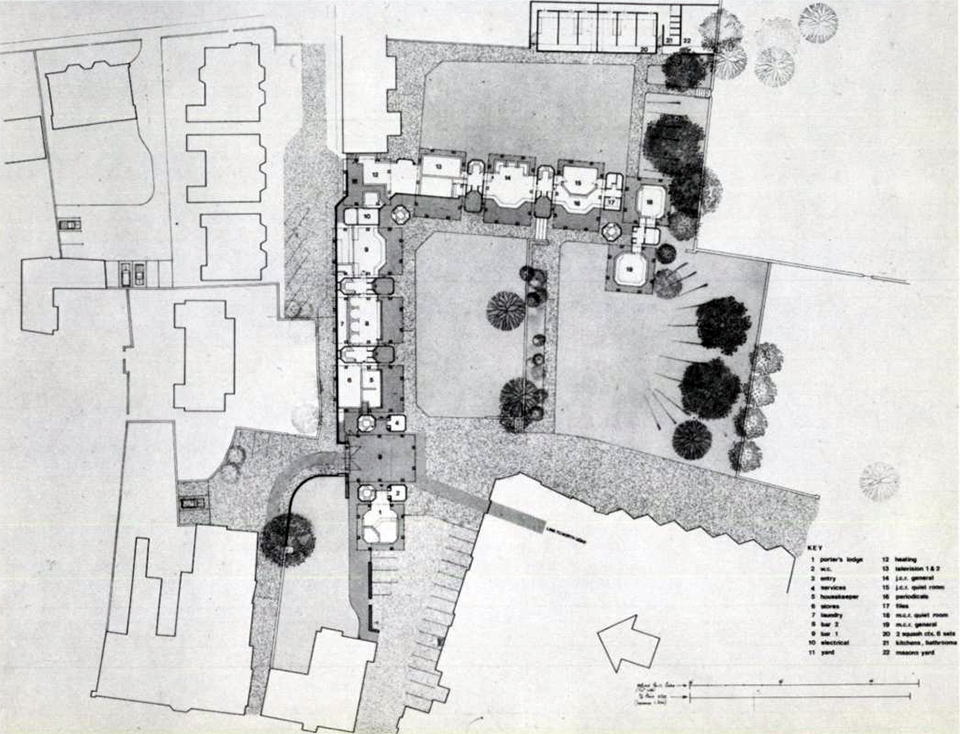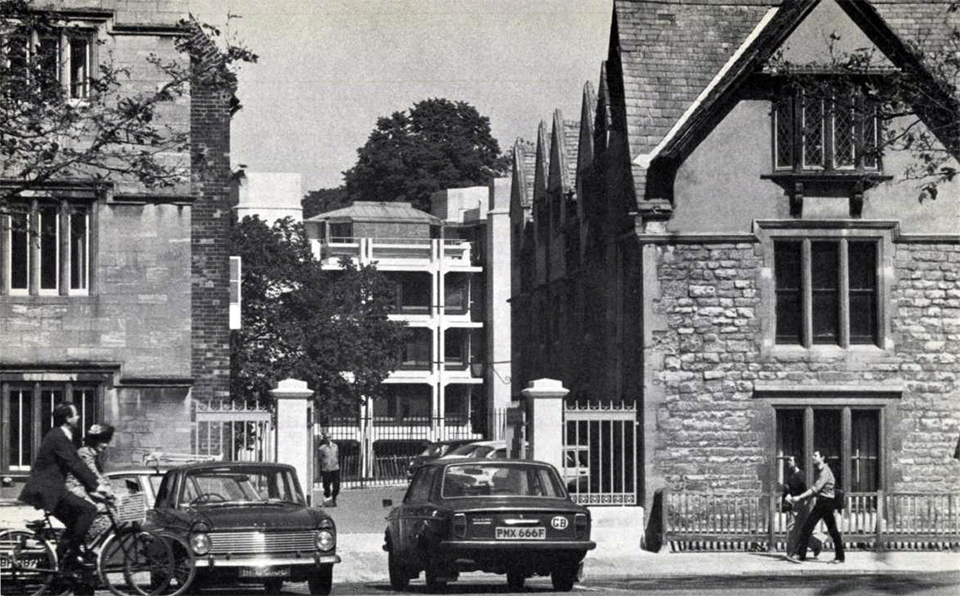Sir Thomas White Building, St John's College
1976
Won through invited competition in 1966, St. John’s College was seen by some as having ‘perfected’ Arup’s (and Philip Dowson’s) developing use of concrete in university buildings. Preceded by schemes in Oxford and Cambridge, this building made the precast concrete structure into the ‘formative source of design’ [1]. It is a garden building of some scale and with a medieval character by virtue of its skeletal towers of stone and lead finishes. The stone was sourced from a quarry near to Paris, with qualities akin to that of Oxford’s Headington stone, and also used on Chichester Cathedral. The scheme’s rhythm is created by its module, each staircase serves four rooms that host a range of functions dependent upon need. The regular module gently shifts and rotates in plan to configure with the walled garden of the college and the modern has an ancient feel. A colonnade, rich in architectural detail, mimics medieval cloisters and off the covered walkways the ground floor rooms house communal functions, bars, laundry, common rooms and stores. The articulated structure of white bush-hammered precast concrete, with double columns, splayed joints and cantilevered corners could not be more expressive and the form thus reads as skeletal, despite their obvious mass. York stone paving and oak frames, doors and linings reinforce a sense of tradition. It is this oscillation between new and old, modern and traditional that really makes this scheme stand apart from its precedents and peers and its enduring quality has knitted well into the townscape becoming a part of the street scene of Lamb and Flag Passage. Dowson described the building as having ‘four faces’, each with a different image enabled by the organisation of the plan and the layered depth of the facades eventually giving way to the domestic scale of the interior. He also considered that Arup’s college buildings had a close relationship with their industrial, office and laboratory work and that St. John’s reflected this as well as their ‘attitudes and architectural values, applied … to an historic site’ [2].
[1] Concrete Quarterly, July-September, 1976, p.6
[2] Arup Journal, Issue 1, 1979, p.14
